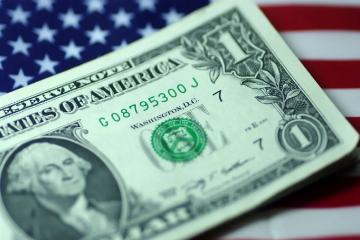Dollar/Yen Rises
Advertisements
Advertisements
A profound understanding of these factors is crucial for grasping the dynamics of the forex market and making accurate predictions about exchange rate movements.
Advertisements
For instance, numerous international investment firms incorporate U.STreasury yields as a key benchmark in assessing asset performanceWhen these yields rise, they are quick to adjust their asset allocations, channeling funds toward U.Sdollar assets, thereby bolstering the dollar's strong demand.
Advertisements
In such scenarios, the dollar, recognized as one of the principal safe-haven currencies, frequently becomes the preferred choice for investorsThis influx of funds amplifies the demand for the dollar, consequently driving up the value of USD/JPYFor example, upon any declarations regarding potential tariff increases, investors worldwide might express concerns about declining global trade volumes, which can adversely impact economic growth across nationsTo mitigate risks, they often redirect their capital into dollar-denominated assets, causing the dollar to appreciate.
- The Reality Behind Failed Fed Rate Cut Expectations
- Volatility of the S&P 500 Index
- The Mobile Market: Shifting Tides and Future Prospects
- Credit Suisse Fallout: Risk of a Domino Effect?
- Fund Flows from U.S. Propel European Stocks to Highs
This performance not only highlights the sound operational status of certain U.Scorporations but also significantly bolsters market confidence in U.SassetsFor investors, a booming stock market often symbolizes healthy economic developmentThe impressive showing of the S&P 500 convinces investors of the formidable resilience and growth potential of the U.Seconomy, attracting even more capital into American marketsThis substantial capital influx heightens demand for the dollar, further propelling the USD/JPY exchange rate upwardFor example, prominent international hedge funds, upon witnessing the strong performance of the U.Sstock markets, tend to escalate their investments in U.Smarkets and other dollar-denominated assets, significantly underpinning the dollar's appreciation.

This new regulation alters the investment environment and asset allocation strategies for domestic Japanese investorsIn pursuit of enhanced investment returns, some Japanese investors may redirect their funds to overseas markets, triggering cross-border capital flowsSuch movements indirectly impact the yen's exchange rate, consequently affecting the USD/JPY rateFor instance, some Japanese investors who traditionally focused their investments domestically may now, inspired by the new regulations, invest in higher-yielding U.Smarkets, leading to an increase in the supply of yen in the forex market; the diminished demand for yen can place downward pressure on its value, therefore advancing the USD/JPY exchange rate.
Previously, the spot exchange rate reached a peak of 156.71 in the New York market before dipping slightlyCurrently, in the Asian electronic brokerage services, the rates fluctuate within a range of 156.41 - 156.51, primarily trading around the descending 200-hour moving average, with the current rate standing at 156.48. The U.STreasury yields exhibit robust support for the ongoing USD/JPY exchange rateSpecifically, the two-year U.STreasury yield is reported at 4.297%, while the ten-year yield stands at 4.607%. In contrast, Japan's two-year yield is 0.687%, and the ten-year yield measures at 1.187%. This substantial yield differential between the U.Sand Japan provides strong support for the dollarSuch pronounced yield disparities render investors more inclined to hold dollar assets, further solidifying the upward trend of USD/JPY.
At the 156.00 level, there are options worth one billion dollars expiring, at 156.15, options of 732 million dollars, and at the levels of 156.50 - 156.60, there are options amounting to 783 million dollarsThe expiry at the 157.00 level stands at 712 million dollarsThe expiration of these options at proximate levels might exert inhibiting effects on the spot exchange rateWhen options near their expiration, investors typically adjust their trading strategies in accordance with the execution conditions of the options and market conditions, leading to more cautious market behaviorsFor instance, when a substantial number of options approach expiration at a given level, investors might opt to close their positions or exercise their options, which can ultimately alter the market's buying and selling strength and affect the direction of the exchange rateWithin these critical levels, market participants will closely monitor the options' expirations, adjusting their investment strategies accordingly in response to market variations, thus influencing the short-term fluctuations of the USD/JPY exchange rate.
Leave A Comment